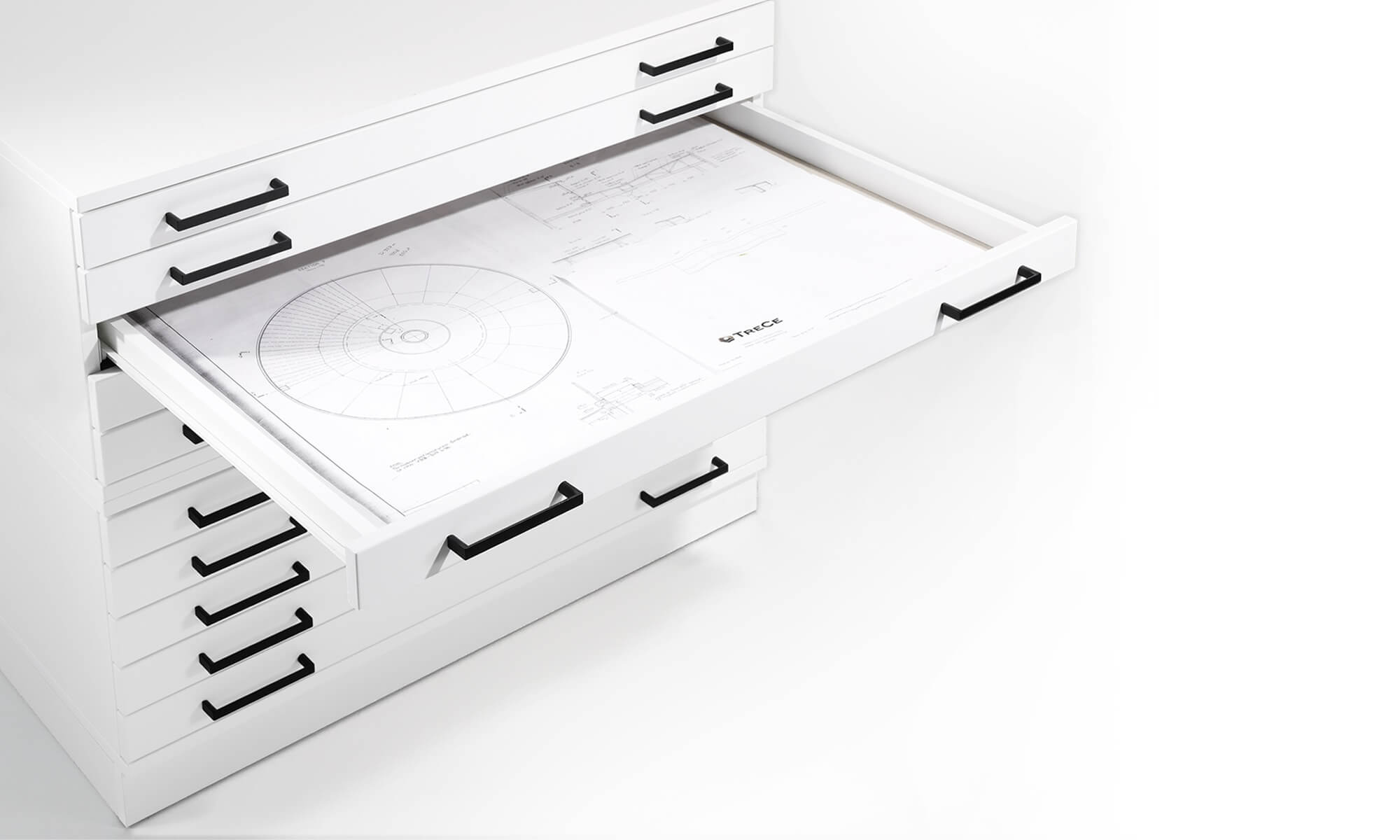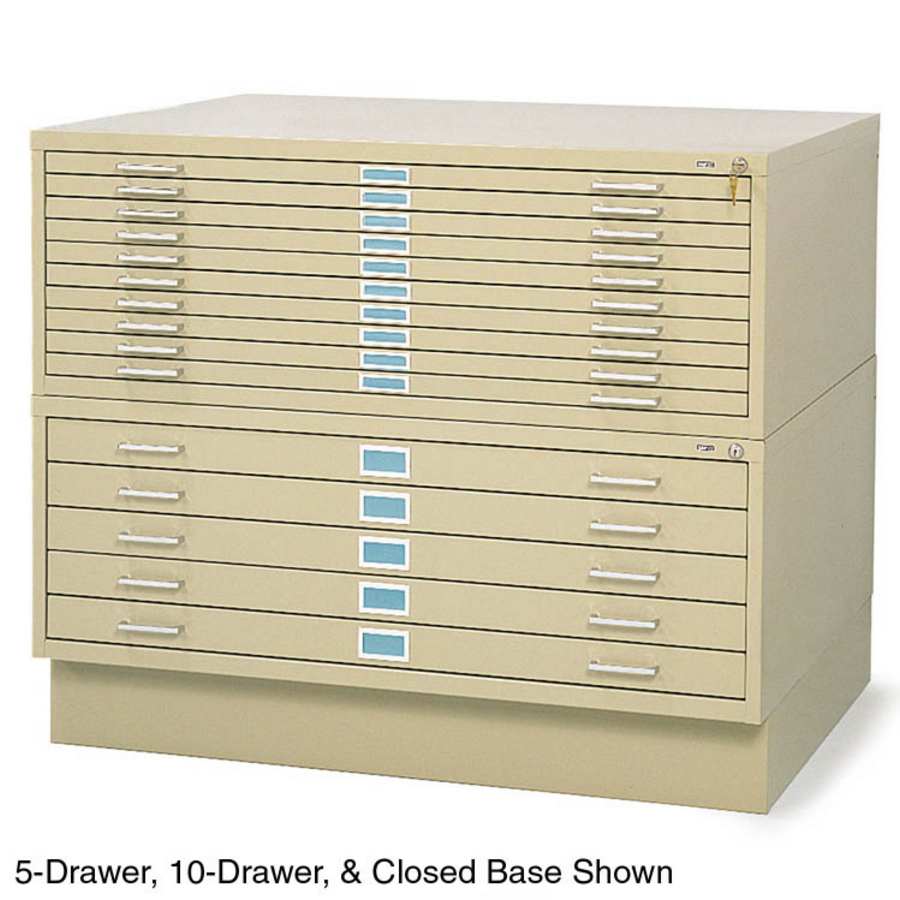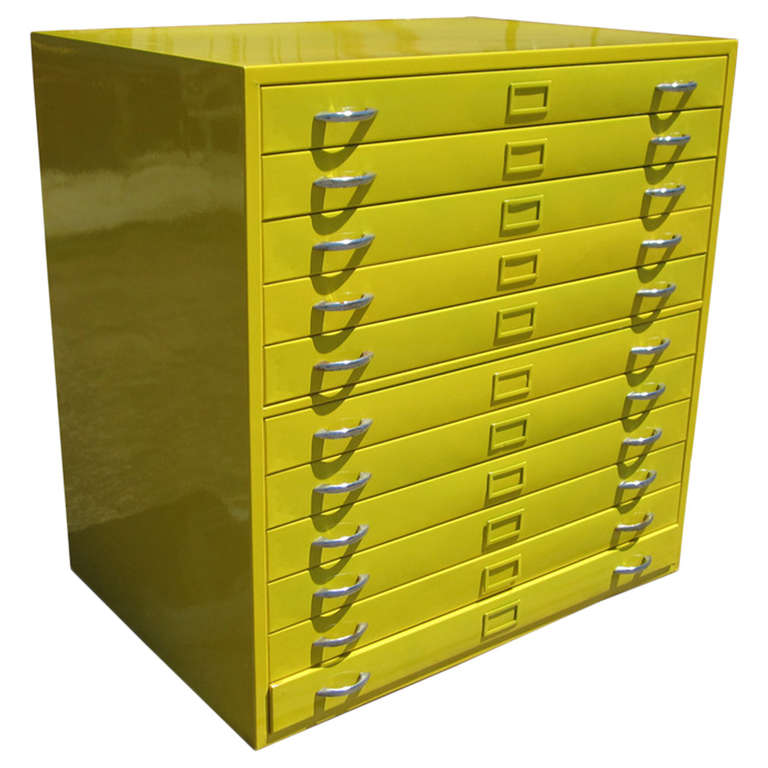The Importance of Architectural Drawing Storage

Architectural drawings are the lifeblood of any construction project. They contain vital information about the design, specifications, and construction details of a building. As such, it is crucial to manage and store these drawings properly to ensure their safety, accessibility, and longevity.
Challenges of Managing Architectural Drawings in a Traditional Office Setting
In traditional office settings, managing architectural drawings can pose significant challenges. The sheer volume of drawings can be overwhelming, leading to disorganization and difficulty in locating specific plans. Furthermore, the physical nature of drawings makes them vulnerable to damage from spills, tears, and general wear and tear. Space constraints can also be a major issue, particularly in smaller offices, leading to inefficient storage solutions and difficulty in accessing drawings quickly.
Risks Associated with Improper Storage of Architectural Drawings
Improper storage of architectural drawings can lead to various risks, including:
* Damage: Architectural drawings are often made on delicate materials like paper or vellum, which can easily be damaged by moisture, spills, or improper handling. This damage can render the drawings unusable, leading to delays and costly rework.
* Loss: Misplaced or lost drawings can result in significant delays and disruption to projects. Without access to essential plans, contractors may struggle to proceed with construction, leading to project delays and increased costs.
* Security Breaches: Architectural drawings often contain sensitive information about a project, such as design details, specifications, and client data. Improper storage can expose these drawings to theft or unauthorized access, potentially leading to intellectual property theft or legal issues.
Specialized Storage Cabinets: Addressing Challenges and Enhancing Efficiency
Specialized storage cabinets are designed to address the challenges and risks associated with traditional architectural drawing storage. These cabinets offer a range of features that enhance the overall efficiency and security of architectural drawing management:
* Organization and Accessibility: Specialized storage cabinets are designed with features that promote organization and ease of access. They often include adjustable shelves, dividers, and labeling systems to help keep drawings organized and readily available. This organization ensures that specific drawings can be easily located, minimizing time spent searching for essential plans.
* Protection from Damage: These cabinets are typically made from durable materials that protect drawings from spills, dust, and other environmental factors. Some cabinets also feature airtight seals to prevent moisture damage and humidity fluctuations. This protection ensures the longevity of drawings, reducing the risk of damage and costly replacements.
* Security Features: Specialized storage cabinets often incorporate security features such as locking mechanisms, fire-resistant materials, and even alarm systems to prevent theft or unauthorized access. These features safeguard sensitive information contained within architectural drawings, protecting intellectual property and client data.
Types of Architectural Drawing Storage Cabinets

Architectural drawing storage cabinets are essential for architects, designers, and engineers to safely and efficiently organize their valuable blueprints, plans, and other important documents. These cabinets come in a variety of sizes, materials, and functionalities, each catering to specific needs and preferences. Choosing the right type depends on factors like the volume of drawings, budget, available space, and desired features.
Size and Capacity
The size and capacity of a drawing storage cabinet determine how many drawings it can hold.
- Small Cabinets: Suitable for individual use or small offices, these cabinets typically have limited storage space and are ideal for storing smaller projects or personal collections.
- Medium Cabinets: These cabinets offer a balance between storage capacity and footprint, making them suitable for teams or medium-sized offices. They can accommodate a larger volume of drawings and plans.
- Large Cabinets: Designed for extensive storage needs, large cabinets can accommodate a substantial amount of drawings, often exceeding 1000 plans. They are ideal for large firms or institutions with extensive archives.
Material
The material of an architectural drawing storage cabinet impacts its durability, aesthetics, and cost.
- Steel Cabinets: Steel cabinets are known for their strength, durability, and resistance to fire and water damage. They are often chosen for their security features and long lifespan. However, they can be heavier and more expensive than other materials.
- Wood Cabinets: Wood cabinets offer a more traditional and elegant aesthetic. They can be customized with various finishes and designs, but they may be susceptible to moisture damage and require regular maintenance. They are generally more affordable than steel cabinets.
- Plastic Cabinets: Plastic cabinets are lightweight, affordable, and offer good moisture resistance. They are often used for temporary storage or smaller projects. However, they may not be as durable or secure as steel or wood cabinets.
Functionality, Architectural drawing storage cabinets
Architectural drawing storage cabinets come in different functionalities, offering flexibility and convenience for various storage needs.
- Mobile Cabinets: These cabinets are equipped with wheels, allowing for easy movement and relocation within the office. They are ideal for frequently accessed drawings or when space is limited.
- Wall-Mounted Cabinets: Wall-mounted cabinets maximize floor space by utilizing vertical storage. They are ideal for smaller offices or when space is a premium.
- Freestanding Cabinets: Freestanding cabinets offer independent storage and can be placed anywhere in the office. They are versatile and can be customized with drawers, shelves, and other features to meet specific needs.
Selecting the Right Architectural Drawing Storage Cabinet

Choosing the ideal architectural drawing storage cabinet requires careful consideration of several factors to ensure your valuable plans are protected and easily accessible. The right cabinet will strike a balance between affordability, security, and practicality.
Assessing Drawing Volume and Size
The first step is to determine the volume and size of drawings you need to store. This will dictate the size and capacity of the cabinet you require. Consider:
- The number of drawings you currently have.
- The anticipated growth of your drawing collection.
- The average size of your drawings (e.g., A0, A1, A2, A3).
- Whether you need to store rolled or flat drawings.
If you have a large collection of large-format drawings, you’ll need a cabinet with a larger capacity and adjustable shelves or drawers to accommodate different sizes. For smaller collections, a more compact cabinet may suffice.
Evaluating Available Space
Consider the available space in your office when selecting a cabinet. Measure the area where you plan to place the cabinet, taking into account any existing furniture or obstacles. Think about:
- The dimensions of the cabinet (height, width, depth).
- The weight of the cabinet when fully loaded.
- The ease of access to the cabinet.
- The potential need for additional storage in the future.
It’s crucial to select a cabinet that fits comfortably in the allocated space without hindering movement or creating a cluttered environment.
Budget Considerations
Budget is a significant factor when purchasing a storage cabinet. Prices can vary widely depending on the materials, features, and size of the cabinet. Consider:
- Your budget constraints and the importance of storage for your firm.
- The cost of different cabinet materials (e.g., steel, wood, plastic).
- The availability of discounts or promotions.
- The potential need for additional storage units in the future.
While it’s tempting to opt for the cheapest option, investing in a durable and secure cabinet will save you money in the long run.
Security Requirements
Architectural drawings contain sensitive information, including client details, design concepts, and intellectual property. Security is paramount. Consider:
- The level of security required for your drawings.
- Whether you need a lockable cabinet or a cabinet with additional security features like alarms or sensors.
- The importance of fireproof or water-resistant cabinets for added protection.
- The possibility of installing surveillance systems or access control mechanisms.
Invest in a cabinet that offers adequate security to protect your valuable drawings from theft, damage, or unauthorized access.
Maintaining and Organizing Architectural Drawing Storage Cabinets

Architectural drawing storage cabinets are essential investments for any architect, firm, or organization. These cabinets protect valuable drawings from damage, dust, and other environmental hazards. However, their longevity and functionality depend on proper maintenance and organization.
Maintaining Architectural Drawing Storage Cabinets
Maintaining architectural drawing storage cabinets involves a combination of regular cleaning, inspections, and proper handling of drawings.
- Regular Cleaning and Dusting: Dust and debris can accumulate over time, affecting the functionality and appearance of the cabinets. Regular cleaning and dusting help prevent this. Using a soft cloth and a mild cleaning solution, wipe down the exterior and interior surfaces of the cabinets, including shelves, drawers, and handles.
- Inspecting for Damage and Wear: Regularly inspect the cabinets for any signs of damage or wear, such as scratches, dents, loose hinges, or broken handles. Address these issues promptly to prevent further damage and ensure the cabinets remain functional.
- Proper Handling of Drawings: Handling drawings with care is crucial to prevent damage and maintain their quality. Avoid bending, folding, or creasing the drawings. Use gloves when handling them to prevent smudges or fingerprints. Store drawings flat to prevent warping.
Organizing Drawings Within Cabinets
Organization is key to efficient retrieval and management of architectural drawings. Effective methods for organizing drawings within the cabinets include:
- Alphabetical or Numerical Indexing: Using alphabetical or numerical indexing helps create a systematic approach to organizing drawings. This system allows for easy retrieval based on project names, client names, or drawing numbers.
- Using Color-Coded Folders: Color-coding folders can further enhance organization and make it easier to identify specific types of drawings or projects. Assign a color to each category, such as blue for residential projects, green for commercial projects, and red for structural drawings.
- Creating a Clear and Consistent Labeling System: A clear and consistent labeling system is essential for easy identification and retrieval of drawings. Use labels that are legible, accurate, and concise. Include relevant information such as project name, drawing number, date, and client name.
Architectural drawing storage cabinets are essential for keeping your blueprints organized and protected. If you’re going for a classic look, dark brown cabinets can add a touch of sophistication. To make sure your workspace looks cohesive, check out this guide on colors that go with dark brown cabinets.
Once you’ve chosen your perfect color palette, you can focus on finding the right storage cabinets to keep your architectural drawings safe and accessible.
Architectural drawing storage cabinets are essential for keeping blueprints organized and protected. They can be found in a variety of styles to match any office décor. If you’re looking for something a little more modern, you might consider a tv lift cabinet with fireplace that can double as a media center.
No matter your style, you’ll find a cabinet that suits your needs and keeps your valuable drawings safe.